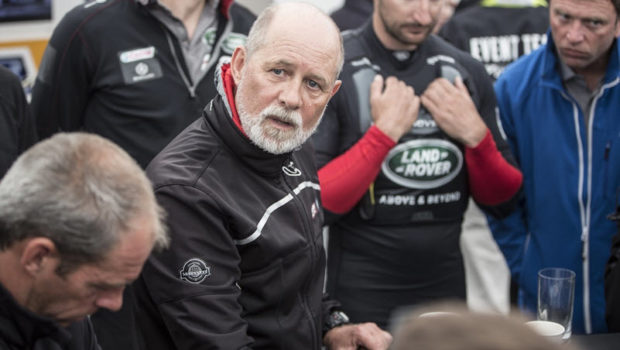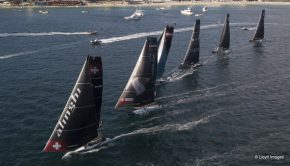Umpiring a Faster Game
Published on July 21st, 2016
With the speed of sailing on the rise, such as with the foiling GC32s being used this season in the Extreme Sailing Series, sailing umpires are being tested like never before.
When boats blast along at up to 35 knots, where they can change direction or speed at any moment, and where decisions must be made in an instant, there is a generation of umpires now seeking to keep up with the new foiling sailors.
Ewan McEwan, the Extreme Sailing Series’ chief umpire, explains what his team does, how they smooth over on-the-water disputes and what it’s like trying to keep up with a fleet of foiling GC32s.
What does an umpire do?
Our job is to make sure that all the sailing is conducted within the rules. I have a team of six umpires on three umpire boats and we follow the racing, giving penalties if the sailors ask us to. If any team has a concern that a rule has been broken they can raise a protest.
One of the things we can’t do in sailing is stop the game – unlike in football where the referee blows a whistle and the play stops we need to keep the race running, so instead we apply penalties during racing. We’re not police – we only interfere if we’re asked to by the sailors. The key for me is to make sure every team has an equal opportunity to win.
What are the challenges faced by Extreme Sailing Series umpires?
Conditions are pretty tough for umpiring, especially given the introduction of the GC32 foiling catamarans. The sheer speed of the boats has increased dramatically. Driving an umpire boat at 25 knots is a skill in itself, let alone then having to umpire the race. Then there’s the changes in speed – one moment the boats could be doing six knots, and the next they could be doing 30.
You think a race is stable and then suddenly one team drops off their foils and slows down, and there’s a concertina effect. Suddenly all the boats are on top of one another fighting for position. You can’t ever relax. We get a few minutes in between races to recover before it starts again.
What happens when a team breaks the rules?
If a team gets into a situation where they feel another team has infringed the rules they raise a flag. We then use a radio system to talk between the umpires and decide what will happen next. If we feel a rule has been broken we will blow a whistle, display a penalty flag and hail the boat.
What sort penalties do you give teams for rule infringements?
In the Extreme Sailing Series we try to match the penalty to the impact of the infringement. If a team has only committed a small infringement they might get a light penalty, but if a team makes a risky move that they’re not allowed to we could make them do penalty turns all day.
We use a coloured flag system for penalties – a red flag means a team has to do a tack (an upwind turn), and a yellow flag means a gybe (a downwind turn). We can then give combinations of the two to make the teams spin through 360 degrees. Ultimately we could choose to disqualify a team but that is very rare.
Source: ESS









 We’ll keep your information safe.
We’ll keep your information safe.